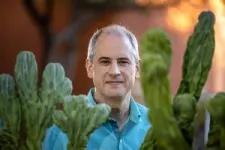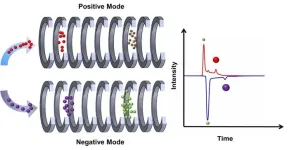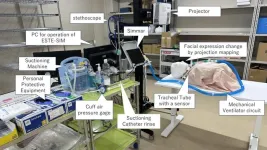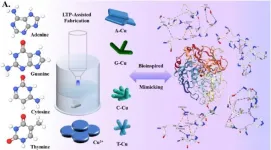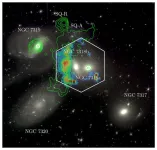(Press-News.org) Just as crop-devouring insects evolve to resist pesticides, cancer cells can increase their lethality by developing resistance to treatment. In fact, most deaths from cancer are caused by the evolution of therapeutic resistance.
In a new review, Arizona State University researchers, working with colleagues around the world, explore how established agricultural pest management strategies could be adapted to address cancer therapy. The pioneering method opens new possibilities for controlling drug resistance and improving patient survival.
The research, which appears in the current issue of the journal Cancer Research, explores 10 pest management principles that could be adapted to treat cancer.
The approach represents a paradigm shift, with an emphasis on managing cancer as a chronic condition rather than seeking complete eradication in cases where curing the disease is unlikely. Clinicians are just beginning to apply these strategies, in a treatment called adaptive therapy.
Drawing from pest management opens a new avenue of cancer research and treatment for a disease that now kills nearly 10 million people worldwide each year, according to the World Health Organization (WHO).
“We’ve been treating cancer as if it doesn’t evolve in response to what we do to it. It is time that we take that evolution seriously, guiding it rather than succumbing to it,” says Carlo Maley, co-corresponding author of the new study.
Maley is a researcher at the Biodesign Center for Biocomputing, Security and Society and professor with the School of Life Sciences at ASU. He is also the director of the Arizona Cancer Evolution Center. In addition to cancer researchers, the interdisciplinary team includes experts in pest management.
A history of drug resistance
In the 1940s, a central obstacle to effective cancer therapy was already evident to researchers. The cause was the evolution of treatment-resistant cells that could not be killed through existing cancer-fighting drugs. Some 40 years earlier, farmers faced an analogous situation with the development of pesticide-resistant insects, which, left unchallenged, could overwhelm crops.
Drug resistance, a major cause of cancer treatment failure, occurs when therapies inadvertently select for the survival of drug-resistant cancer cells — similar to how pesticides can lead to resistant pests.
When resistance is "selected," cancer cells or insects with resistant traits to treatment or pesticides, respectively, survive and reproduce, while the others are eliminated. Over time, resistant insects or cancer cells dominate. These resistant populations then proliferate, making treatment less effective and more difficult to manage.
Agricultural techniques inspire improved cancer treatment
A suite of agricultural techniques called integrated pest management combines biological, chemical and mechanical controls to sustainably manage pests. Researchers hope to apply ten principles adapted from these techniques in revolutionizing cancer research and treatment.
The techniques include:
Prevention first: Optimizing patient care and modifying the environment to create conditions that are less favorable for cancer cell growth.
Continuous monitoring: Using advanced tools like liquid biopsies to track tumor progression and resistance markers in real time.
Only treat when necessary: Identifying specific thresholds for treatment to minimize unnecessary drug use.
Adaptive treatment: Rotating therapies and adjusting doses based on tumor response to maintain long-term control.
Minimal impact: Selecting treatments with fewer side effects and lower toxicity.
Nonchemical approaches: Incorporating methods such as surgery and immunotherapy to reduce reliance on toxic drugs.
Dose optimization: Using the lowest effective drug doses to slow resistance evolution.
Cross-resistance reduction: Avoiding repeated use of drugs with similar mechanisms of action.
Long-term success metrics: Focusing on survival and quality of life rather than complete eradication of the disease.
Forecasting outcomes: Using predictive models to anticipate tumor behavior and refine treatment plans.
The approach could help overcome treatment resistance that occurs with existing cancer therapies, whether they rely on a single drug or multiple.
The applicability of adaptive therapy to all forms of cancer offers a broad framework for advancing oncology. For example, colorectal cancer, which has multiple treatment options but poor outcomes in the late stages, is an ideal candidate for clinical trials of this approach.
To maximize the potential of the new approach, the researchers emphasize the importance of personalized medicine. Continuous genomic profiling and liquid biopsies during therapy, for example, are powerful tools for tailoring cancer treatments to individual patients. By analyzing changes in tumor mutations and monitoring cancer biomarkers in bodily fluids, these techniques can help oncologists know when to change tactics and slow the evolution of drug-resistant cells while minimizing toxic side effects.
Adaptive therapy in action
In an earlier study — one of the first of its kind — Maley, first author Sareh Seyedi and their colleagues applied adaptive therapy to a preclinical model of a stubbornly resistant form of breast cancer in mice.
Unlike standard cancer treatments that aim to eliminate as many cancer cells as possible using maximum tolerated doses, adaptive therapy uses lower or intermittent doses to keep tumor growth under control. The approach exploits competition between drug-sensitive and drug-resistant cancer cells to prolong survival and reduce treatment resistance.
The researchers found that by alternating or modulating the doses of two anti-cancer drugs, they could significantly improve survival times compared with traditional therapy. The method also used lower cumulative drug doses, reducing toxicity while achieving better outcomes.
The researchers envision a future where adaptive therapy becomes a cornerstone of cancer care. Ongoing preclinical studies aim to validate these principles, and clinical trials will follow to evaluate their effectiveness in patients with advanced cancers.
In addition to ASU colleagues, Maley is joined by national and global researchers from Mayo Clinic; University of Arizona; North Carolina State University; University of California Santa Barbara; The Institute of Cancer Research; The Royal Marsden Hospital; Research Casting International; Istanbul University; and University of Lausanne.
END
From food crops to cancer clinics: Lessons in extermination resistance
Borrowing principles from pest management, ASU researchers aim to extend survival rate, quality of life for cancer patients
2024-11-22
ELSE PRESS RELEASES FROM THIS DATE:
Scientists develop novel high-fidelity quantum computing gate
2024-11-22
Researchers from the RIKEN Center for Quantum Computing and Toshiba have succeeded in building a quantum computer gate based on a double-transmon coupler (DTC), which had been proposed theoretically as a device that could significantly enhance the fidelity of quantum gates. Using this, they achieved a fidelity of 99.92 percent for a two-qubit device known as a CZ gate and 99.98 percent for a single-qubit gate. This breakthrough, which was carried out as part of the Q-LEAP project, not only boosts the performance ...
Novel detection technology alerts health risks from TNT metabolites
2024-11-22
Recently, a research group led by Prof. HUANG Chaoqun from the Hefei lnstitutes of Physical Science of the Chinese Academy of Sciences, developed an innovative dual drift tube ion mobility spectrometry (DDT-IMS) technology. This novel approach has successfully facilitated the rapid detection of both positive and negative ions of four toxic metabolites derived from 2,4,6-Trinitrotoluene (TNT), allowing for the detection of residual metabolites in the human body and providing valuable health warnings.
The research results were published in Talanta.
TNT undergoes biodegradation under the influence of fungi and bacteria, producing hazardous metabolites ...
New XR simulator improves pediatric nursing education
2024-11-22
A new simulator gives nursing students hands-on practice with vital procedures like mechanical ventilation and tracheal suctioning in children.
Researchers at Hokkaido University in Japan have created a new training tool to equip nursing students with the skills needed in caring for children who require mechanical ventilation and tracheal suctioning. In a study published in the Journal of Nursing Care & Reports, the team highlighted the simulator's role in addressing the significant increase ...
New copper metal-organic framework nanozymes enable intelligent food detection
2024-11-22
Recently, a team led by Prof. HUANG Qing from the Hefei Institutes of Physical Science of the Chinese Academy of Sciences, successfully used the gas-liquid interface dielectric barrier (DBD) low-temperature plasma (LTP) technology to prepare a series of Cu metal organic framework (MOF) nanozymes.
“These nanozymes have different base ligands and mimic the activity of laccase,” said Prof. HUANG. The team also developed encoded array sensors for intelligent sensing and identification of bioactive components in food.
The relevant research ...
The Lancet: Deeply entrenched racial and geographic health disparities in the USA have increased over the last two decades—as life expectancy gap widens to 20 years
2024-11-22
The differences in US health and life expectancy based on where an individual lives, the economic conditions in that location, and their racial and ethnic identity have increased over the last two decades, leading to substantial health disparities that divide the USA into ten mutually exclusive populations, which the study authors term “The ten Americas”.
The life expectancy gap—an important indicator of a population’s health— across these ten Americas increased from 12·6 years in 2000 to 20·4 years in 2021, exacerbated by the COVID-19 pandemic.
Between 2000 and 2010 life expectancy increased in nine out of ten Americas, but between 2010 ...
2 MILLION mph galaxy smash-up seen in unprecedented detail
2024-11-22
A massive collision of galaxies sparked by one travelling at a scarcely-believable 2 million mph (3.2 million km/h) has been seen in unprecedented detail by one of Earth's most powerful telescopes.
The dramatic impact was observed in Stephan's Quintet, a nearby galaxy group made up of five galaxies first sighted almost 150 years ago.
It sparked an immensely powerful shock akin to a "sonic boom from a jet fighter" – the likes of which are among the most striking phenomena in the Universe.
Stephan's Quintet represents "a galactic crossroad where past collisions between galaxies ...
Scientists find a region of the mouse gut tightly regulated by the immune system
2024-11-21
The intestine maintains a delicate balance in the body, absorbing nutrients and water while maintaining a healthy relationship with the gut microbiome, but this equilibrium is disrupted in parts of the intestine in conditions such as celiac disease, ulcerative colitis, and Crohn’s disease. Scientists don’t fully understand how different regions of the organ resist or adapt to changes in the environment and how that is disrupted in disease.
Now, researchers at the Broad Institute of MIT and Harvard and Massachusetts General Hospital have analyzed the entire mouse intestine, mapping gene expression and cell states and location in the healthy gut and in response to ...
How school eligibility influences the spread of infectious diseases: Insights for future outbreaks
2024-11-21
A recent study in JAMA Network Open sheds light on how school attendance influences the spread of infectious diseases, using COVID-19 as a case study. Researchers analyzed the natural age cutoff for kindergarten eligibility in California to compare COVID-19 rates between children old enough to start school and those who were not. This approach, called regression discontinuity, offers a way to rapidly understand the role of schools in disease transmission and evaluate the effectiveness of within-school prevention measures without requiring additional data collection or school closures.
The study's findings underscore the complexity of school-based transmission ...
UM School of Medicine researchers link snoring to behavioral problems in adolescents without declines in cognition
2024-11-21
Adolescents who snore frequently were more likely to exhibit behavior problems such as inattention, rule-breaking, and aggression, but they do not have any decline in their cognitive abilities, according to a new study conducted by researchers at the University of Maryland School of Medicine (UMSOM). This is the largest study to date tracking snoring in children from elementary school through their mid-teen years and it provides an important update to parents struggling with what medical measures to take to help manage snoring in their children.
The findings were recently published in JAMA ...
The Parasaurolophus’ pipes: Modeling the dinosaur’s crest to study its sound #ASA187
2024-11-21
MELVILLE, N.Y., Nov. 21, 2024 – Fossils might give a good image of what dinosaurs looked like, but they can also teach scientists what they sounded like.
The Parasaurolophus is a duck-billed dinosaur with a unique crest that lived 70 million to 80 million years ago. It stood around 16 feet tall and is estimated to have weighed 6,000 to 8,000 pounds.
Hongjun Lin from New York University will present results on the acoustic characteristics of a physical model of the Parasaurolophus’ crest Thursday, Nov. 21, at 4:30 p.m. ET as part of the virtual 187th Meeting of the Acoustical Society of America, running Nov. 18-22, 2024.
“I’ve ...
LAST 30 PRESS RELEASES:
Sleeping in on weekends may help boost teens’ mental health
Study: Teens use cellphones for an hour a day at school
After more than two years of war, Palestinian children are hungry, denied education and “like the living dead”
The untold story of life with Prader-Willi syndrome - according to the siblings who live it
How the parasite that ‘gave up sex’ found more hosts – and why its victory won’t last
When is it time to jump? The boiling frog problem of AI use in physics education
Twitter data reveals partisan divide in understanding why pollen season's getting worse
AI is quick but risky for updating old software
Revolutionizing biosecurity: new multi-omics framework to transform invasive species management
From ancient herb to modern medicine: new review unveils the multi-targeted healing potential of Borago officinalis
Building a global scientific community: Biological Diversity Journal announces dual recruitment of Editorial Board and Youth Editorial Board members
Microbes that break down antibiotics help protect ecosystems under drug pollution
Smart biochar that remembers pollutants offers a new way to clean water and recycle biomass
Rice genes matter more than domestication in shaping plant microbiomes
Ticking time bomb: Some farmers report as many as 70 tick encounters over a 6-month period
Turning garden and crop waste into plastics
Scientists discover ‘platypus galaxies’ in the early universe
Seeing thyroid cancer in a new light: when AI meets label-free imaging in the operating room
Neutrophil-to-lymphocyte ratio may aid risk stratification in depressive disorder
2026 Seismological Society of America Annual Meeting
AI-powered ECG analysis offers promising path for early detection of chronic obstructive pulmonary disease, says Mount Sinai researchers
GIMM uncovers flaws in lab-grown heart cells and paves the way for improved treatments
Cracking the evolutionary code of sleep
Medications could help the aging brain cope with surgery, memory impairment
Back pain linked to worse sleep years later in men over 65, according to study
CDC urges ‘shared decision-making’ on some childhood vaccines; many unclear about what that means
New research finds that an ‘equal treatment’ approach to economic opportunity advertising can backfire
Researchers create shape-shifting, self-navigating microparticles
Science army mobilizes to map US soil microbiome
Researchers develop new tools to turn grain crops into biosensors
[Press-News.org] From food crops to cancer clinics: Lessons in extermination resistanceBorrowing principles from pest management, ASU researchers aim to extend survival rate, quality of life for cancer patients

